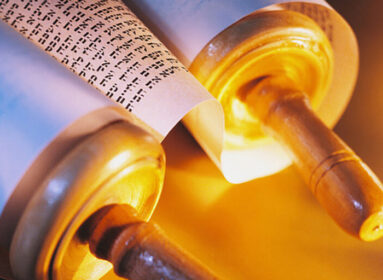By Shlomo Riskin ~
Our Hebrew calendar places us at the end of the count of the Omer which connects Passover and Shavuot, after the modern holidays of Israel Independence Day and Jerusalem Day. It gives us a perfect opportunity to take a fresh look at the Biblical commandment to count the Omer. In this way, we can understand the connection between Passover and Shavuot, and discern the silent “finger of the Divine” guiding Jewish history.
Our investigation begins with a most problematic phrase which is to be found in the Biblical passage dealing with all of the festivals: “When you enter the land I am going to give you and you reap its harvest, bring to the priest a sheaf of the first grain you harvest . . . From the day after the Sabbath, the day you brought the sheaf
of the wave offering, count off seven full weeks. Count fifty days up to the day after the seventh Sabbath, and then present an offering of new grain to the Lord” (Lev 23:9,10,15,16).
The count is to begin “on the morrow of the Rest Day,” which may be interpreted as either on the day after the Sabbath following the Passover festival or on the day following the first day of the festival of Passover, the sixteenth day of Nissan.
The Sadducees were a second commonwealth religious sect consisting mainly of Kohanim and wealthy aristocrats who were strict Biblical constructionists and who limited the scope of the Oral Law. They maintained the former interpretation, arguing that the count was to begin the day after the Sabbath. This meant that the Israelites would count from Sunday to Sunday for seven weeks with Shavuot always falling out on the fiftieth day, a Sunday.
The Pharisees – the second commonwealth religious sect who made up the religious mainstream — were committed to an expanding Oral Law. They would always begin the count on the second night of Passover, Nissan 16, with the specific day of the week remaining fluid, depending on the year.
The Sadducees’ interpretation seems much more in line with the plain meaning of our Biblical text, “on the morrow of the Sabbath.” For the Pharisees, Shabbat in
this context must be taken to mean “festival,” a day of rest.
What is the true basis of their debate? Remember that the Pharisees could find themselves harvesting the barley omer on Friday night, which would be impossible
for the Sadducees for whom the harvest sacrifice was always on Saturday night, on Sunday eve.
The heart of our understanding of this Pharisee-Sadducee debate lies in two distinct ways of viewing the Festivals and the two distinct and separate New Years of the Hebrew calendar. Tishrei marks the New Year from an agricultural and universalistic perspective, commemorating the creation of the world on Rosh Hashanah and announcing the beginning of the rainy season, so necessary for the year’s good crop and harvest on Sukkot. Nissan, on the other hand, is the first month from an historical and nationalistic perspective, commemorating our exodus from Egypt and our birth as an independent nation.
Which of these two rubrics does the Omer period fit into? The Sadducees logically maintained that it is purely agricultural, – a seven-week period which opens with the ripening of barley and concludes with the ripening of wheat, with the rest of the seven species ripening during this time as well. It is a free-standing period of seven Sabbath weeks, paralleling the seven times seven Sabbaticals of forty-nine years and culminating in the purely agricultural Festival of the first fruits (Shavuot). Note as well the centrality of the Shabbat element in this entire picture, emphasizing the morrow of the Sabbath day!
The Pharisees see it differently. They link the count specifically to Passover, beginning on the second eve of Passover, thereby the connection from Passover to Shavuot is an extricable bond. And although the period is unmistakably dedicated to the grain harvest, it is also – and for them primarily – the count of in preparation for the Revelation at Sinai. Passover is only the first step of our freedom from slavery, leading up to the much more exalted freedom with our service of the Divine through the Revelation at Sinai on the fiftieth day (Shavuot, according to our oral tradition). From this historical perspective, Passover only begins a march to freedom, which culminates on Shavuot with the Festival of First Fruits in our Temple. It is the time for our ethical, moral and religious preparation for God’s revelation.
Historically, along the way, we fell down on the job, and so we must mourn the loss of 24,000 of Rabbi Akiva’s disciples in the abortive Bar Kochba rebellion against Rome, a tragedy that occurred during this period of the calendar year (in 135 CE) because we didn’t respect each other sufficiently. The modern calendar, however, brings us renewed hope with our new festivals of Israeli Independence Day and Jerusalem Day occurring during this same calendar period as well!
Rabbi Shlomo Riskin is chancellor of Ohr Torah Stone and chief rabbi of Efrat,
Israel.








 Southern New England Jewish Ledger
Southern New England Jewish Ledger








